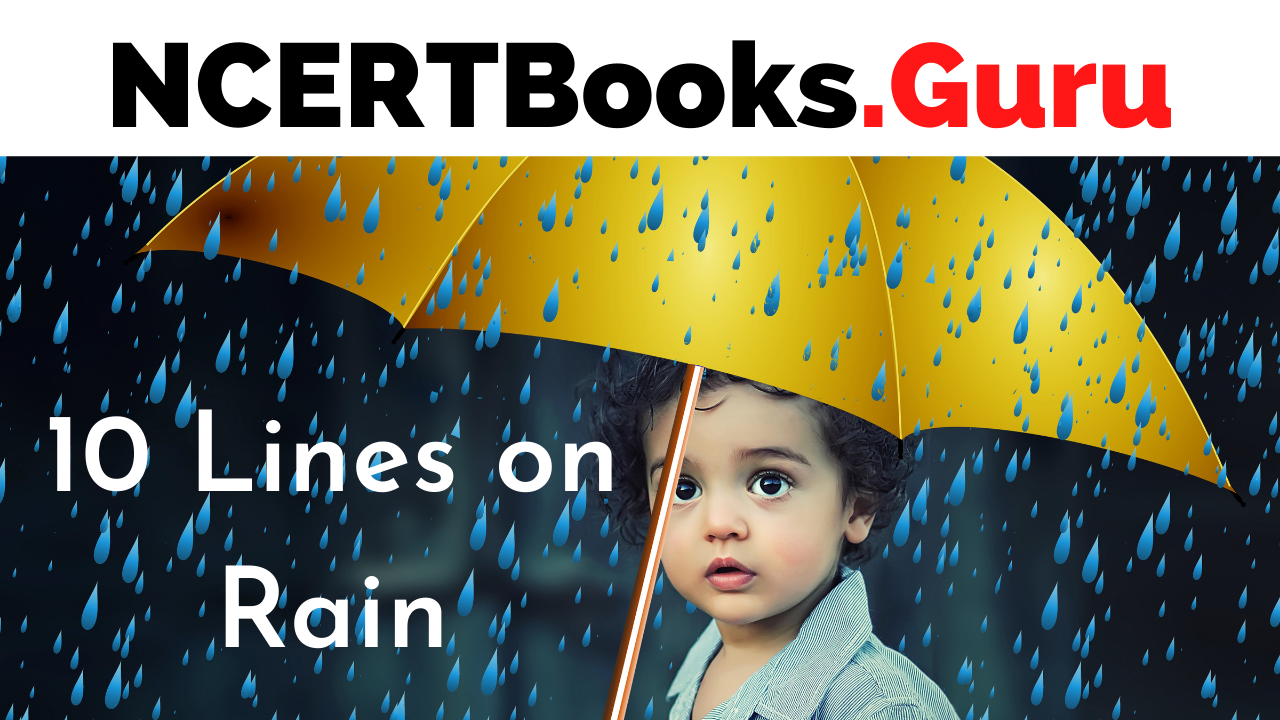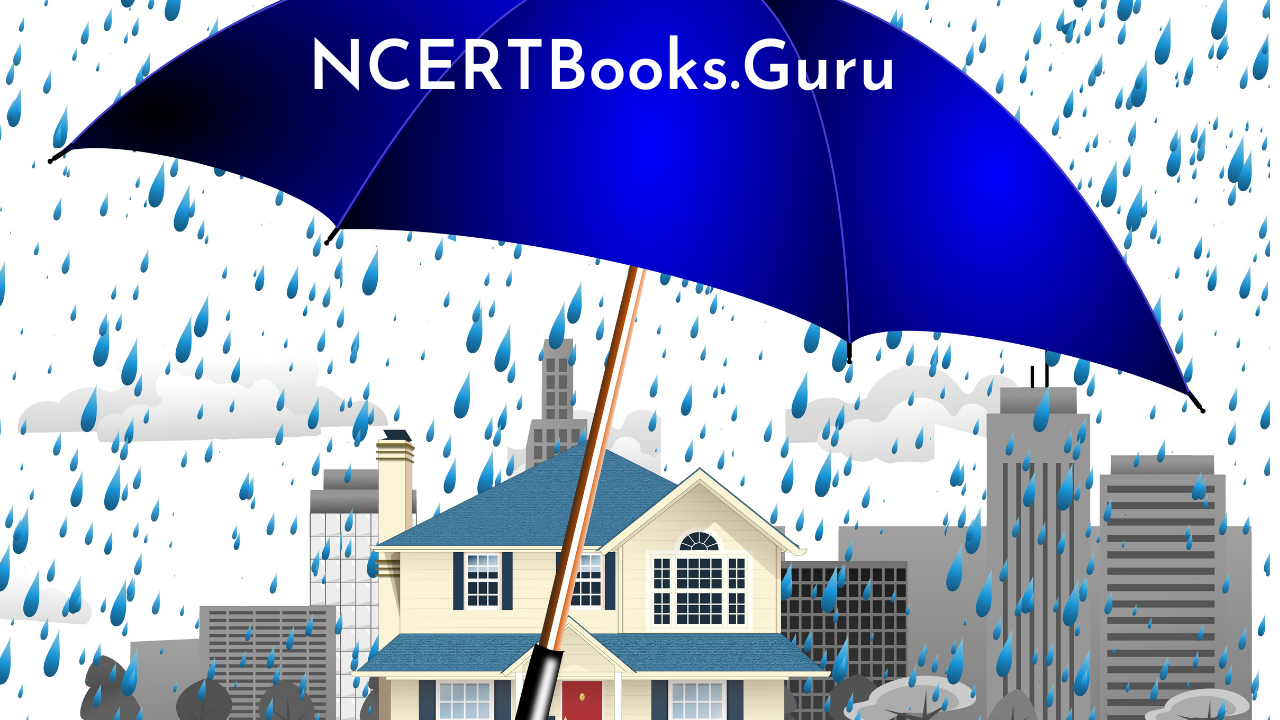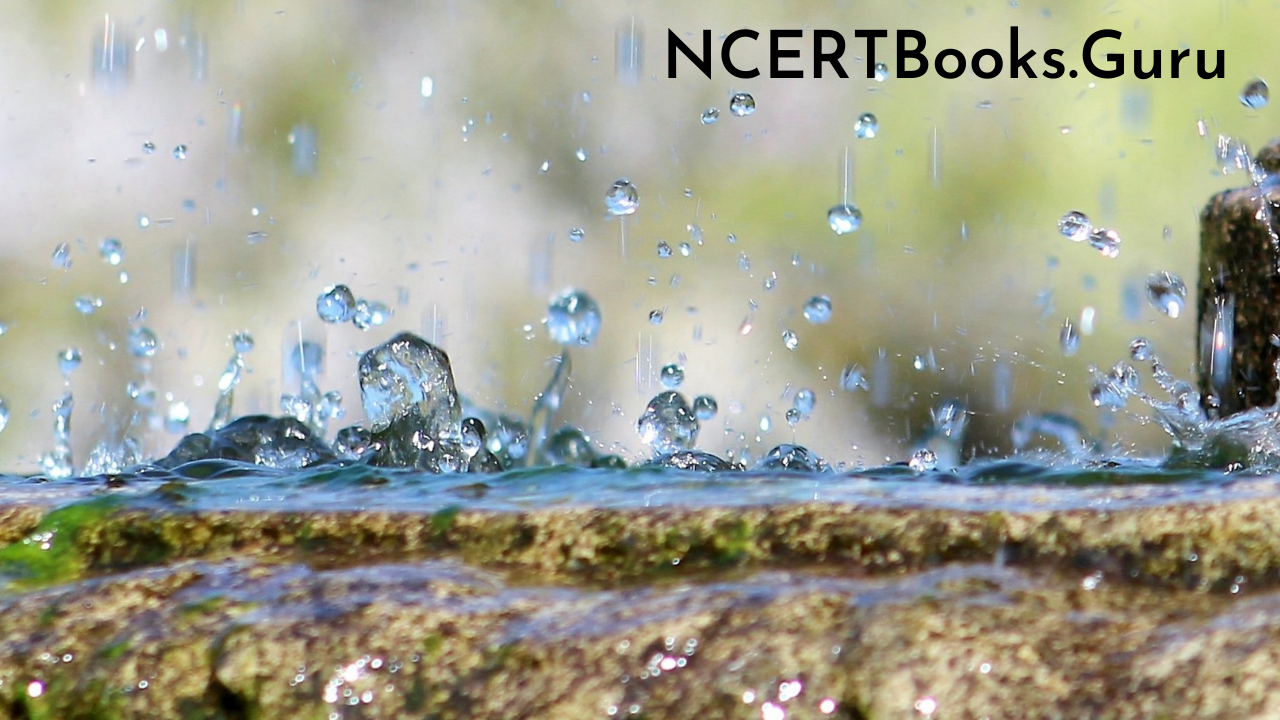10 Lines on Rain: Rain is the water that falls from the sky, as surreal as that sounds. Rain comes from the clouds of water vapour in the sky, which collect in the sky as a result of evaporation in the water cycle.
Rain can come in many forms, including a light drizzle, heavy rainfall with thunder and lightning such as a storm, or even as hail and snow. Rain is an essential part of the water cycle and is necessary for the planet earth to continue forth as it is. Let’s now see three sets of 10 lines on rain for students of different classes.
Enhance your vocabulary and writing skills with 10 Lines Essays available. Spark up the creativity in you and access various Topics on 10 Lines all in one place.
Set 1 – 10 Lines on Rain for kids
The following set of 10 lines on rain will be helpful for children or the students of classes 1, 2, 3, 4 and 5.
- Rain is the water that falls from the clouds after the cloud becomes too heavy.
- Rain consists of water droplets which are formed when water vapour goes into the sky.
- Evaporation is the process where heat makes the water turn into vapour and go into the sky.
- There is a lot of rain in the tropical and hot areas of our planet.
- In the areas where it does not rain a lot, we call them deserts.
- Rain is very important for agriculture as it waters the crops and gives them the irrigation they need to grow.
- Rain can be of many kinds, such as drizzling (very light rain), or even thunderstorms, where rain pours heavily and there is also thunder and lightning.
- Rain can be very powerful, as it can even make trees fall sometimes, and it can even cause floods.
- Playing in the rain with our siblings or our friends is a lot of fun.
- It is important to carry an umbrella when we live in an area where it rains a lot so that we can keep ourselves covered.
Set 2 – 10 Lines on Rain for School Children
The following set of 10 lines on rain will be useful for students of middle in school, in classes 6, 7, 8 and 9.
- Rain, in its definition, consists of droplets of water which fall from the clouds once they become too heavy to hold any more water vapour.
- Clouds are formed when the process of evaporation takes place by turning water into vapour which rises and leads to the formation of clouds.
- Rain can sometimes be severely heavy, such as on a stormy day when there are thunder and lightning as well.
- Very heavy rain is capable of causing a lot of destruction, by creating floods or by toppling trees, light poles and even buildings.
- Rain can also be very light and mild, where you may not even be able to tell that it is raining, at times.
- Rain can also come in the form of hail, which refers to small pieces of frozen rain (ice) which can hurt if they hit the head.
- Snow is also a form of precipitation which falls in the form of ice crystals, which are different from frozen ice or hail.
- A good level of rainfall is necessary for crops to grow properly and for them to be well-nourished.
- Rainfall is also important for all living beings, as we all are made up mostly of water, among other things.
- Rain is one of the most important parts of the water cycle, as it brings the water down from the atmosphere back to the earth’s hydrosphere where it can be utilised by living beings.
Set 3 – 10 Lines on Rain for Higher Class Students
The following set of 10 lines on rain for senior school will be helpful and useful for students in classes 10, 11 and 12.
- Rain refers to the droplets of water which fall from the clouds in the sky when they become too heavy to contain any more water vapour.
- Clouds are formed as part of the water cycle of the earth, where water turns into water vapour and through the process of evaporation, goes into the sky and turns into clouds, which then fall as rain.
- Rain is incredibly important to keep the hydrological balance of the earth in check, as it carries on the water cycle as it continues from the sky to earth.
- Rain is very essential to the growth of crops and the cultivation of agriculture and its allied activities, such as horticulture and floriculture.
- Rain is also important in terms of clearing the air of toxins and air pollutants from the atmosphere.
- Rain can be a light drizzle which we can barely feel, or it can be moderate where it is not that heavy but it still creates puddles on the ground.
- The last kind of rain is the destructive rain where it is so heavy that it creates floods and even causes buildings and light poles, even trees, to topple and create a lot of destruction.
- It usually rains the most in the monsoon season, which is usually right after the summer months, and it rains much more heavily in tropical areas than anywhere else.
- It is important for cities to have appropriate rainwater drainage and rainwater harvesting systems in place to ensure that it is being treated properly and is also being saved wherever it can be saved.
- It can be fun to play in the rain, but one may also get sick doing so, thus, it is important to stay safe when it rains and be sure to always carry an umbrella with you.
Frequently Asked Questions on Rain
Question 1.
Which are the monsoon months?
Answer:
Monsoon is the season in which the highest amount of rain occurs, especially in the tropical areas of the earth. The monsoon months generally follow the hot summer months of March to May, thus monsoons usually occur from the months of June to September. In some places, they may even resume in the winter months.
Question 2.
What is rainwater harvesting?
Answer:
Rainwater harvesting refers to the collection of rainwater in a huge reservoir tank, for utilisation later. This was an idea that was introduced in order to curb water pollution and also battle the problem of shortages of water, by utilising the rainwater rather than letting it all go to waste.
Question 3.
What are cyclones and hurricanes?
Answer:
Cyclones and hurricanes are two kinds of rainstorms which are quite similar. When there is low pressure in the atmosphere, the winds begin to move in a circular fashion which moves in an anti-clockwise direction from the northern to the southern hemisphere of the earth. This creates an anti-clockwise circular pattern in the water, too, along with strong winds and heavy rainfall, which is called a cyclone. A hurricane is also known as a tropical cyclone, and the difference between cyclones and hurricanes is only their geographical location. Cyclones usually start in the northern Indian Ocean, while hurricanes start in the Atlantic Ocean and the northern Pacific Ocean.
Question 4.
Where does rain come from?
Answer:
Rain is a result of the water cycle. Evaporation and condensation are two processes through which water turns into water vapour and travels skywards. Several water vapour droplets join to create one cloud, and when that cloud becomes too heavy, and gravity starts pulling on the cloud, the vapour begins to drop back down the earth in the form of rain. Thus, rain falls in the form of droplets known as raindrops.


